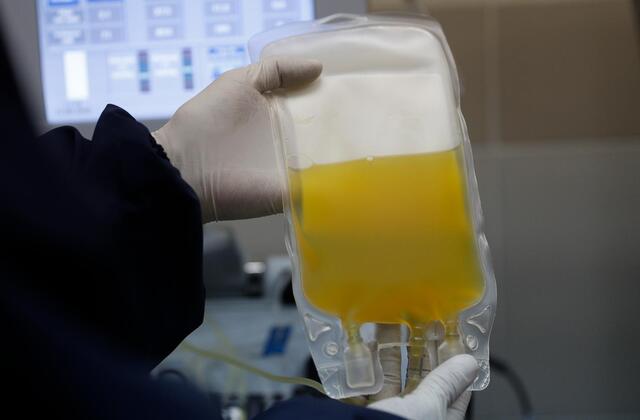Since first reported in December 2019, coronavirus disease 2019 (COVID-19) has become an unresolved global pandemic. The treatment of critically ill COVID-19 patients remains a serious issue. Patients critically ill with COVID-19 have been widely reported to have a poor prognosis, and theory reveals that cytokine storm might underlie this mechanism.
No study has found an effective treatment for the management of a cytokine storm in patients critically ill with COVID-19. Therefore, an investigation into the treatment that acts to remove these proinflammatory cytokines, for example, using therapeutic plasma exchange (TPE) may be required.
Since first introduced in 1952, TPE has been shown to provide an excellent outcome in patients with multiple myeloma to control hyperviscosity. Moreover, the implementation of this therapeutic treatment has also been reported in an Escherichia coli outbreak, a Shigella infection, infectious toxicosis, and septic shock with multiple organ failure; and reduced risk of mortality was revealed. In the case of COVID-19, the US Food and Drug Administration (FDA) has posited that TPE may have a role as a rescue therapy in critically ill patients with COVID-19. However, insufficient evidence has resulted in indecision in applying TPE for the management of critically ill COVID-19 patients. Our study aimed to assess the potential of TPE in reducing mortality of critically ill COVID-19 patients using a metaanalysis approach.
We identified a total of 255 papers from March to August 2021. The major databases used are PubMed, Scopus, and Web of Science. After a feasibility assessment based on inclusion and exclusion criteria, four papers were included in the final analysis. Four studies from Oman, Turkey, Pakistan, and Saudi Arabia revealed similar findings in which TPE treatment reduced mortality among patients with COVID-19.
In critical COVID-19 patients, the excessive accumulation of cytokines may occur, and this can lead to a fatal outcome. TPE is a therapeutic procedure principally acting to remove (through double filtration) molecules of 60–140 nm in size. The molecule size of pro-inflammatory cytokines/ chemokines is 80–220 nm. Therefore, the elimination of pro-inflammatory cytokines/chemokines, proven to affect those critically ill with COVID-19 might provide benefits to improve the prognosis of COVID-19 patients. Moreover, a previous study also reported that TPE played an important role in eliminating toxic substances by suppressing the cytokine release syndrome. TPE also plays a crucial role in restoring normal substances that may be deficient in the plasma, leading to stabilization and restoration of endothelial membranes.
We found that COVID-19 patients treated with TPE had a lower risk of mortality compared to those without TPE treatment. Since COVID-19 guidelines suggest that the use of TPE for patients with COVID-19 should be carefully implemented as the evidence of TPE efficacy was only limited to a case report, our current findings might strengthen the evidence that the use of TPE is effective in reducing the risk of mortality among patients with COVID-19. However, in real-world implementation, special settings such as appropriate condition, target of treatment, potential complications, and particular case or comorbidity should be investigated.
Author: Dr. Gatot Soegiarto, dr., Sp.PD, K-AI
Detailed information from this research can be seen on our article at:
Wardhani SO, Fajar JK, Soegiarto G et al. The association between therapeutic plasma exchange and the risk of mortality among patients critically ill with COVID-19: a meta-analysis [version 1; peer review: 2 approved, 2 approved with reservations] F1000Research 2021, 10:1280 https://doi.org/10.12688/f1000research.74972.1





